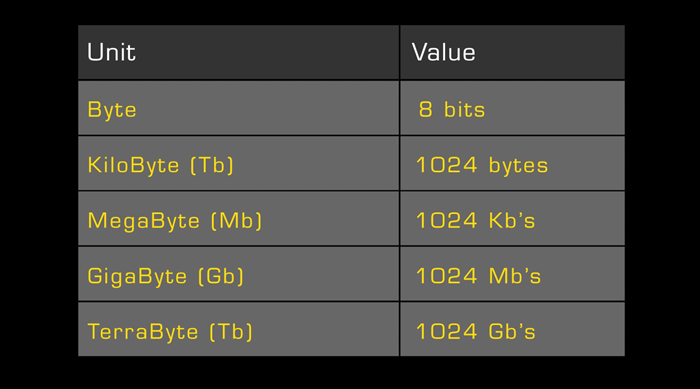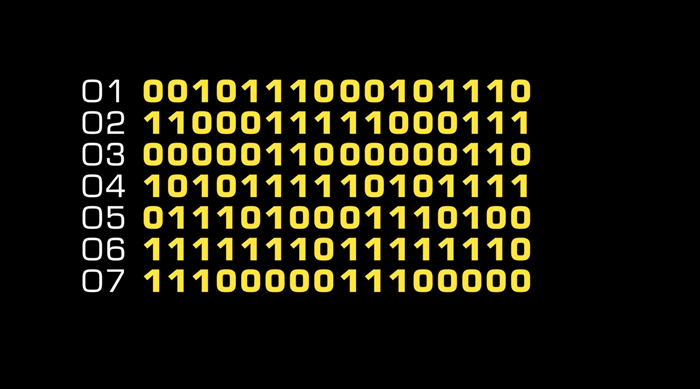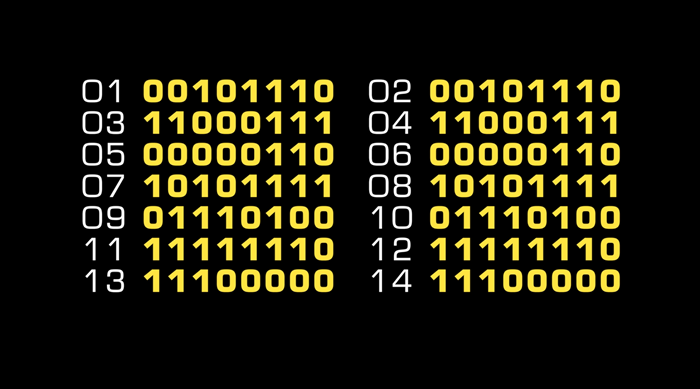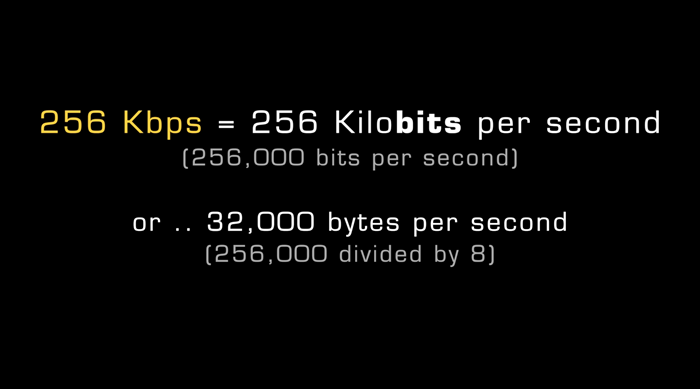Digital audio 03
Data size, data capacity and data rate
- Video
- Script
Welcome to this video on data size, data capacity and data rate.
Data size, capacity and rate are all important terms and concepts in digital theory and essential for home and project studio owners to understand.
For example, it is often important for us to be able to calculate how much hard disc storage space a project may require when configuring a DAW's sample rate and word length.
It may also be important for us to know how we should configure the properties of an MP3 file to meet the data rate requirements of a given distribution platform.
Caption - Data size
Data size is expressed in Bytes, Kilobytes, Megabytes, Gigabytes and Terrabytes, and is used to express the size of digital files such as system components, applications, and data, including digital audio.

For example, average MP3 files have a data size of approximately 1 Megabyte for every stereo minute and an overall average data file size of 5 Megabytes. CD quality audio files have a data size of approximately 10 Megabytes per stereo minute, or 5 per mono minute, and an overall average data file size of 50 Megabytes.
Caption - Data capacity
The term "Data capacity" is used to express both the capacity of short term memory modules such as RAM, FlashRAM and ROM, and the capacity of long term storage devices such as hard drives and DVD-R discs.
For example, average hard disc capacity is measured in Terrabytes, and DVD-R discs can hold approximately 4.3 Gigabytes of data.
Caption - 8-bit byte unit of measurement
It is important to know that data size and data capacity are almost always expressed by operating systems in terms of 8-bit bytes. So for example, the data-size of a file containing seven 16-bit bytes would be expressed as 14 bytes. This ensures we will always know absolute size and capacity.


Caption - Data rate
The term "Data rate" is used to express 3 things ..
1. the average amount of data per second that a digital video or audio media file contains
2. the maximum speed of a connection technology such as USB, ethernet or an internet connection, and is also known as Bandwidth.
and ..3. the speed with which data can be transferred from a storage device to RAM, also referred to as "sustained data transfer rate"
Note that data rate is usually expressed in bits, thus 256 Kbps is the same as 256 Kilo bits per second, ie 8 times slower than KiloBytes per second.

Caption - Thanks for watching
The script for this video, with accompanying images, can be found at projectstudiohandbook.com
We suggest you subscribe at our YouTube channel, and join our mailing list at our website to receive notification of new videos, blog posts and subscriber only extras.
Thanks for watching.